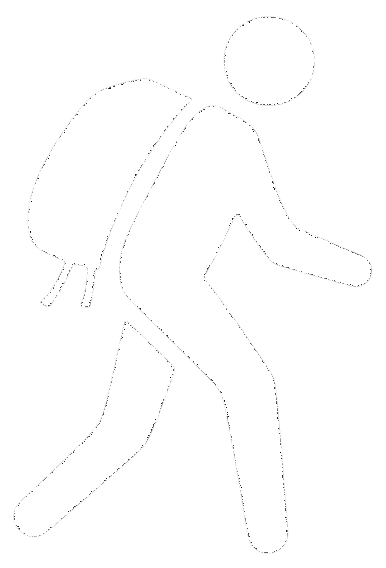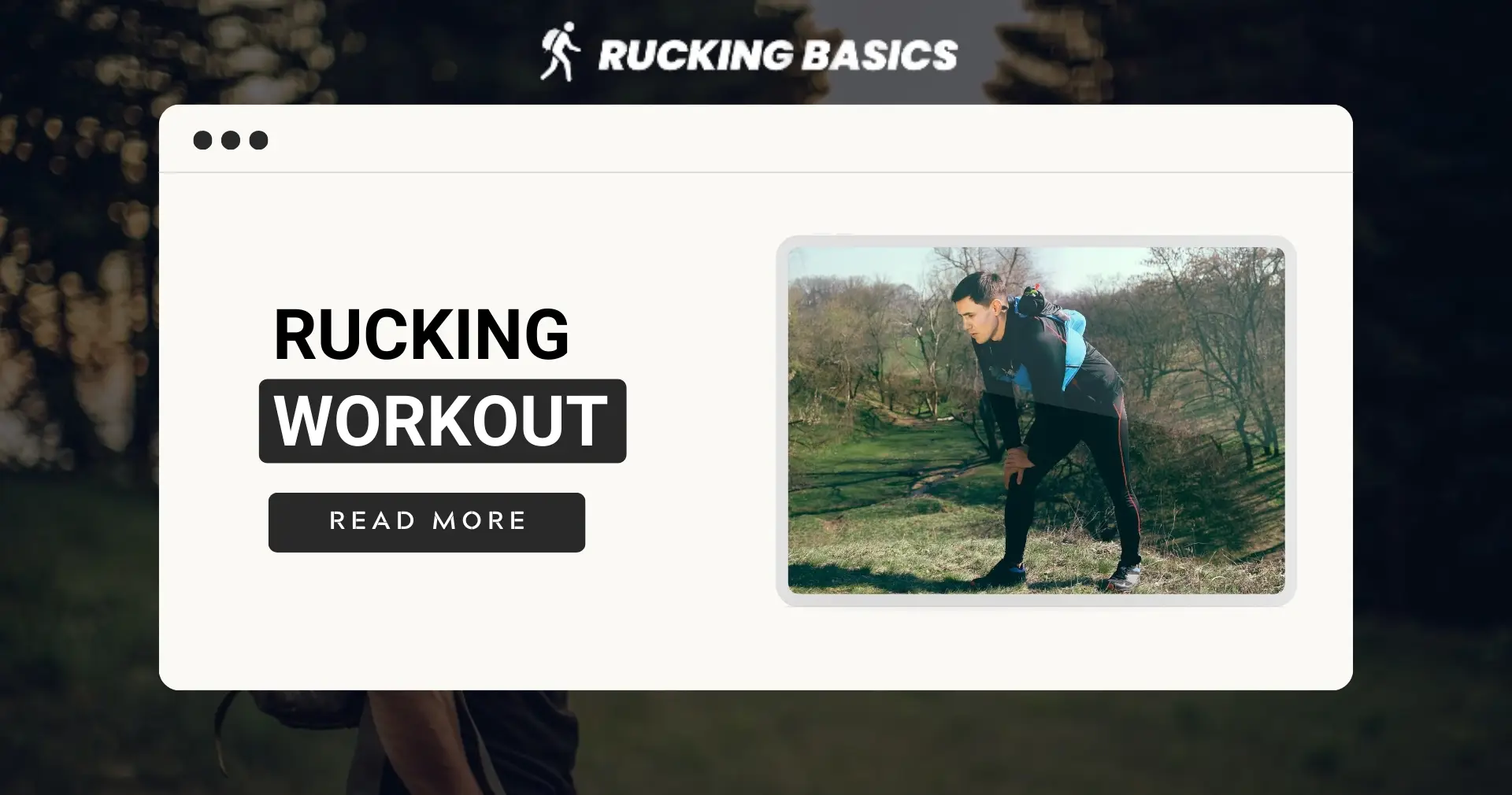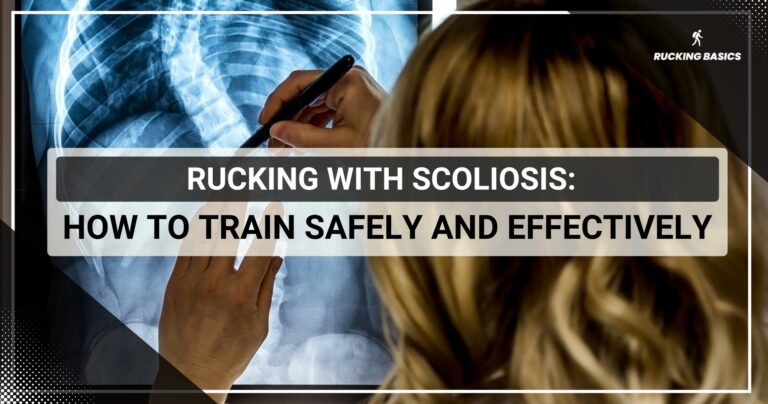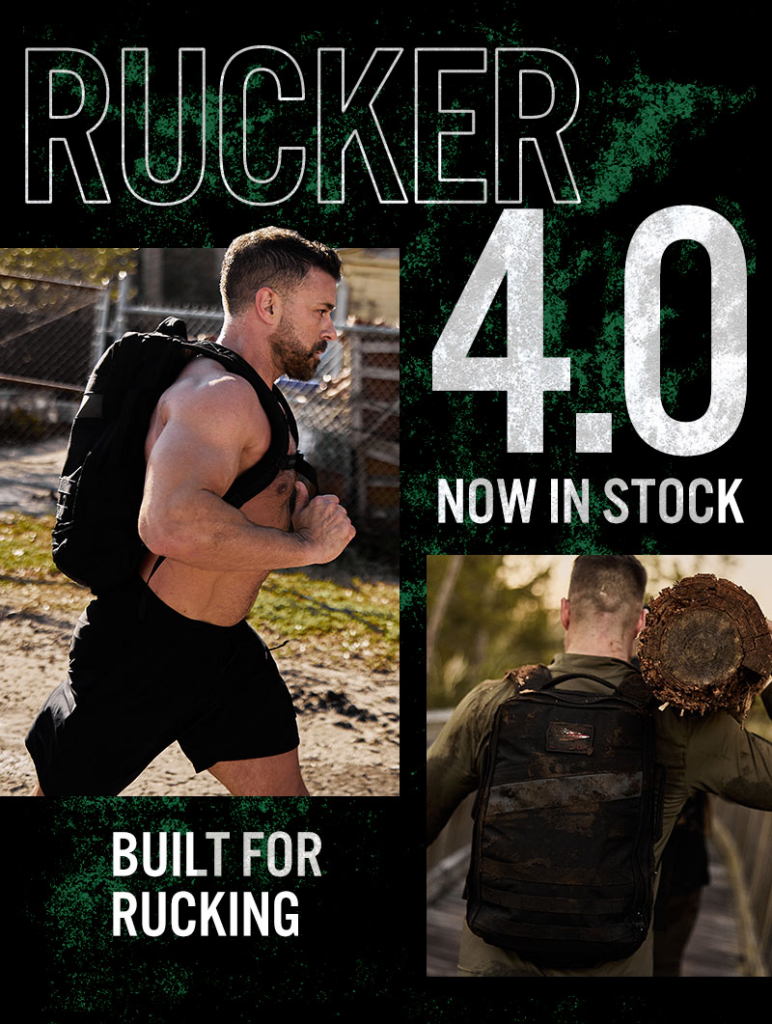Gyms are filled with fancy machines, Instagram coaches talk about intense cardio sessions, and complex routines, so it’s easy to overlook simpler, more practical forms of exercise.
As a fitness coach, I hate to see how new training methods constantly emerge while people forget the basics — if you want to run faster, you have to sprint; if you want to play better tennis, you have to spend more time on the court, and if you want to be stronger, you have to put your body to work.
That’s where rucking comes in, and believe me, it’s one of the most underrated workouts for building total-body strength. If you’ve ever felt like your workout is missing something—whether it’s full-body engagement or real-world functional strength—rucking might be the answer you’re looking for.
So, let’s explore why rucking workout is such a powerful approach to building strength, how it engages your entire body, and why it could be the missing piece in your fitness routine.
Why Should You Ruck?
I remember hearing how one fellow rucker labeled rucking as a “moving plank” because it challenges all your muscles plus improves your cardiovascular fitness.
This funny explanation of rucking is actually very accurate, and that’s my answer to the question of why rucking workouts should become part of your fitness routine.
I’m still astonished at how naturally rucking combines cardio with resistance training. You’re working your legs most, but also your core, back, shoulders, and the rest of your body.
If you already have a decent fitness foundation and are looking for a way to level up, rucking is an ideal addition to your routine. It provides a functional strength-building element that running or weightlifting alone might miss. The same applies to beginners as well as advanced exercisers.
Key Benefits of Rucking for Full-Body Strength
Walking with a weighted backpack… can it truly have so many benefits? Let me tell you.
Engages Multiple Muscle Groups
This type of functional training does not isolate muscles like traditional gym exercises; instead, it teaches your body to work as a cohesive unit. So, you engage both the upper and lower body. The emphasis is on the lower body, but rucking delivers real upper-body benefits, unlike other forms of cardio and endurance activity. A heavy rucksack challenges your upper body significantly, especially over time, as you increase the weight.
For everyday life, the strength you build through rucking is much more helpful than a 1RM bench press.
Improves Posture and Core Stability
One of the first benefits you’ll experience when you start rucking is how your posture improves. Carrying weight on your back naturally forces you to stand taller and maintain proper alignment.
Understanding the importance of rucking posture can help you avoid common mistakes, like leaning too far forward or arching your back. These small adjustments protect your spine and make rucking more comfortable.
Once you activate your deep core muscles, which are “dead” from so much sitting, your spine will be much more stable, which is crucial for injury prevention. I’ve found that rucking has done more for my posture than any dedicated core routine.
Rucking engages your core like few other exercises, and some even consider it a low-key ab workout. If you’re curious about how to build abs for rucking and maximize core activation, check out this guide on rucking and abs. It dives into the connection between rucking and core strength while offering tips to fine-tune your approach.
And no, rucking won’t get you a six-pack, nor will any other workout regime—six-packs are made in the kitchen.
Builds Endurance Without Impact
One of the best things about rucking is its low-impact nature. If you’ve struggled with joint pain or injuries from running or other high-impact activities, rucking is the alternative you’ve been looking for. You can push cardiovascular limits and improve stamina while still protecting joints.
You get the endurance-building benefits but without the pounding on your knees, hips, and ankles. Once I replaced running with rucking, my knees stopped hurting. For those playing tennis, it’s a similar feeling to playing on clay courts versus hard courses.
Burns Calories Efficiently
It is mainly a strength-builder but rucking is also an efficient calorie-burner. Because you’re carrying extra weight, rucking burns much more calories than you would during a regular walk. It’s the same as weight training, which burns more calories than calisthenics.
And calorie burn is not increased only during activity. Since you also build muscle mass while doing it, your metabolism gets a boost, helping you burn more calories even after your ruck is done. Thus, you increase the basal metabolism, which is the most effective way to avoid gaining weight in the long term.
How to Prepare for a Rucking Workout
Yes, rucking is easily accessible since you don’t need to learn advanced techniques or invest significant funds in equipment. Still, before you start a rucking workout, you have to prepare for your comfort, performance, and safety.
Gear Selection
The most important piece of equipment is your rucksack. It must fit well and distribute the weight evenly.
Check our guides for the best rucksack for rucking and the best rucking backpacks, where you will find the models we recommend after testing and the most important features to consider.
Weighted vests like the GoRuck Training Weight Vest 2.0 are also a good option because they are perfectly comfortable for strength training. When it comes to adding weight, you have several options: a ruck plate, sandbags, or even bricks can work. I’ve found that it’s best to use something that’s easy to secure so it doesn’t shift while you’re walking.
For those looking to expand their home or outdoor training toolkit beyond backpacks and vests, kettlebells are an excellent option. The dynamic nature of kettlebell workouts complements rucking by promoting explosive power, grip strength, and full-body coordination. This GORUCK kettlebell review explores how these tools hold up under real-world training conditions and how they fit into a broader strength program.
Footwear and Clothing
The best rucking boots and rucking shoes are just as important as a backpack. Without proper footwear and a backpack, rucking workouts will not be equally successful.
Sturdy shoes with proper arch support and heel cushioning will prevent discomfort and injury over time. I can’t emphasize enough the importance of investing in moisture-wicking socks. They keep your feet dry, which minimizes the risk of blisters—one of the most common issues during long rucks. In terms of clothing, choose moisture-wicking, breathable fabrics. Trust me, you’ll appreciate being comfortable and dry on longer rucks when the heat starts to build up. Avoid cotton, as it traps sweat and can lead to chafing.
Weight Recommendations
If you’re just starting, resist the urge to go heavy immediately. A general rule of thumb is to start with a load of about 10-15% of your body weight. As you build strength and endurance, you can gradually increase the weight. But don’t increase too much, stick around 5 to 10 pounds at a time. Adding too much weight too soon can easily lead to injury or burnout. More advanced ruckers often work their way up to carrying 20% or even more of their body weight.
Warm-Up Routine
Warming up is essential, especially when you’re about to load your body with extra weight. A dynamic warm-up is far more effective than static stretching. Start with lunges to activate your hip flexors and glutes, as these are key muscles for walking with a load. Follow that with leg swings to loosen up your hamstrings and hips, and finish with shoulder rolls to warm up your upper body. Taking 5–10 minutes to warm up has multiple good effects on your body.
How to Do a Rucking Workout Based on Fitness Level
Rucking is an incredibly adaptable workout, making it suitable for everyone. Here’s how you can structure your rucking workouts, regardless of your fitness level.
Beginner Workouts
If you’re new to rucking, your main goal should be to ease your body into the movement, focusing on building a foundation of endurance and good form.
Example beginner training program:
- Distance: 2 miles
- Weight: 10 pounds
- Pace: Brisk walk, no rushing—aim for a steady pace you can maintain comfortably.
Intermediate Rucking Workouts
Once you’ve built up a base fitness level, it’s time to ramp things up. Intermediate ruckers can use more weight and walk on inclines or uneven surfaces. At this stage, your ruck weight can be increased to 20-30 pounds, and you’ll likely feel strong enough to handle distances of 3-4 miles comfortably.
Another excellent way to progress is to play with your own pace. You can maintain a steady walk but occasionally add bursts of faster walking, especially on flat stretches, to raise your heart rate.
Example intermediate workout:
- Distance: 4 miles
- Weight: 20-30 pounds
- Pace: Steady walk with 30-second bursts of faster walking every 5 minutes.
Advanced Rucking Workouts
If you’re an experienced rucker, this is where you can really start to push your limits. You’ll want to incorporate ruck sprints, stair climbs, and resistance exercises to maximize the workout. This is where you start to see significant gains in strength and endurance.
I love intervals of sprinting at this stage. This combination of rucking and short, intense bursts of speed forces your body to work in an anaerobic zone.
Example of advanced workout:
- Distance: 5+ miles
- Weight: 30-40 pounds
- Pace: Incorporate 30-second sprints every 5 minutes, followed by a steady walking pace.
How Rucking Compares to Other Outdoor Fitness Activities
Hiking and rucking share similarities, but rucking is designed to be more fitness-focused. While hiking can be leisurely, a rucking workout should include intentional pacing, a structured weight load, and a focus on strength-building.
Backpacking differs more from rucking than hiking because it’s about survival gear and endurance over long distances.
Running and rucking are similar if we talk about cardiovascular benefits, but rucking stresses joints significantly less. This makes it a better option for most people because you get cardio without pain in your knees and the rest of your body. I’m not saying that running is bad or useless, so if you don’t have joint problems, definitely keep running.
Wrapping Up
Rucking is mostly aerobic exercise that offers a perfect balance of simplicity and effectiveness. The first few times, you won’t feel anything (except muscle soreness the day after), but after a few weeks or months (depending on the frequency and intensity), you will notice improvements in strength, endurance, and posture.
One of the things I like most about rucking is that you can easily adjust it to your needs. Want to challenge yourself more? Add extra weight. Need a lighter workout? Reduce the weight and slow the pace. And that does not mean that once you increase weight, you cannot reduce it again for a recovery session. Or just to clear your mind after a hard week.
It is always fun, whether you’re rucking on the treadmill, along a trail, or in a park. Trust me, once you start, you’ll wonder why you didn’t start sooner!
Frequently Asked Questions (FAQs)
Can rucking workouts enhance muscle definition?
Yes, rucking can enhance muscle definition, especially in the legs, glutes, and back. Carrying a weighted backpack engages your muscles, increasing muscle tone over time. The combination of strength and endurance work also helps burn fat, further revealing muscle definition.
Is rucking a suitable alternative to weightlifting?
It depends on your intentions. Rucking can be a solid alternative to weightlifting, especially for those looking for functional strength. Yet, you can’t expect it to become Mr. Olympia with the help of rucking.
Can rucking workouts improve functional strength for daily activities?
Rucking is excellent for developing functional strength that translates to daily activities. Carrying a load while walking mimics real-life tasks, like lifting or moving objects. This makes rucking highly practical since it can affect your ability to carry groceries or climb stairs.
Is rucking suitable for older adults looking to maintain or build strength?
It is an excellent option for older adults because it’s low-impact and scalable to their fitness level. The added weight helps maintain muscle mass, which is critical as we age. Also, rucking is beneficial for osteoporosis because it builds bone density.
References
Warburton DE, Nicol CW, Bredin SS. Health benefits of physical activity: the evidence. CMAJ. 2006 Mar 14;174(6):801-9. doi: 10.1503/cmaj.051351. PMID: 16534088; PMCID: PMC1402378.
Clark JE. The impact of duration on effectiveness of exercise, the implication for periodization of training and goal setting for individuals who are overfat, a meta-analysis. Biol Sport. 2016 Dec;33(4):309-333. doi: 10.5604/20831862.1212974. Epub 2016 Aug 5. PMID: 28090136; PMCID: PMC5143767.
Earl-Boehm JE, Poel DN, Zalewski K, Ebersole KT. The effects of military style ruck marching on lower extremity loading and muscular, physiological and perceived exertion in ROTC cadets. Ergonomics. 2020 May;63(5):629-638. doi: 10.1080/00140139.2020.1745900. Epub 2020 Apr 2. PMID: 32191155.








